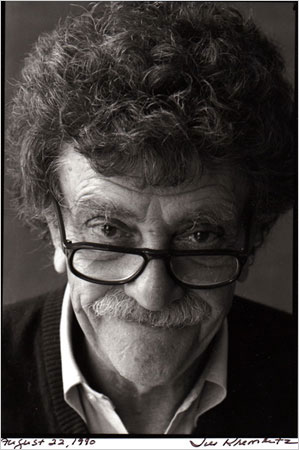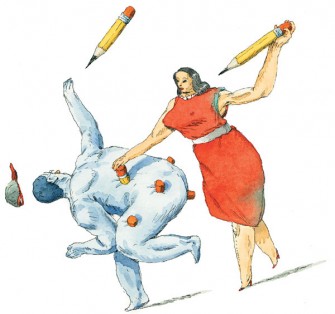“Prototype early and often, making each interative step a little more realistic”
Bill Moggridge opens with this comment in the introduction to Chapter 10 of his book “Designing Interactions”. In some ways it’s the best and simplest description of the design process I have heard in a long time.

I finally got around to picking up his book this past week, and it’s a remarkably comprehensive compendium of information about how we went from the Lisa to the Blackberry. It feels like a textbook, and clocks in at over 700 pages. Not all of it feels pertinent to design in a broader sense – the definition of interaction design is surprisingly narrow given the amount of interviews Bill engages in – but there are tremendous nuggets that anyone who does user-centered design will find reassuring and even reinvigorating. If nothing else, every designer should read (and re-read) Chapter 10: ‘People and Prototypes’.
 For the past three years, I’ve been a speaker and team mentor at a great design event called “Image, Space, Object”. It’s put on by the AIGA and run by Mike and Kathy McCoy and Fred Murrell. I’m lucky to have been a part of the event; it is one place where my three passions (user-centered design, storytelling, and rapid prototyping) all come together. For three days participants work collaboratively to create something completely new.
For the past three years, I’ve been a speaker and team mentor at a great design event called “Image, Space, Object”. It’s put on by the AIGA and run by Mike and Kathy McCoy and Fred Murrell. I’m lucky to have been a part of the event; it is one place where my three passions (user-centered design, storytelling, and rapid prototyping) all come together. For three days participants work collaboratively to create something completely new.
This August the event is happening again, with a slightly new theme: “People Centered Brand Experiences”; while some of the studio mentors/presenters are coming back again (Rick Robinson and Hugh Dubberly have been there since the beginning, while Chris Hacker will be back for the third time), this year’s special guest is Mr. Bill Moggridge. Here’s how the process is described on the conference site:
People-centered narratives serve as a starting place for the design of graphic, interaction, product and environmental experiences. Research, modeling, team ideation and experiential prototyping are employed throughout the three days to produce tangible final presentations that can be brought back to work and used with your design teams.

 Tonight
Tonight  For 18 years, Patrick JB Flynn was the art director at The Progressive, the Madison-based non-profit magazine edited (until 1994) by Erwin Knoll. And during those 18 years, Patrick provided editorial illustrators with an unparalleled opportunity to express themselves in whatever manner they desired. The result was a remarkable creative partnership between Patrick and many of the best illustrators of the last two decades of the 20th century.
For 18 years, Patrick JB Flynn was the art director at The Progressive, the Madison-based non-profit magazine edited (until 1994) by Erwin Knoll. And during those 18 years, Patrick provided editorial illustrators with an unparalleled opportunity to express themselves in whatever manner they desired. The result was a remarkable creative partnership between Patrick and many of the best illustrators of the last two decades of the 20th century.  The list of illustrators he worked with was astounding, and even more amazing given the tiny fees he could offer. Steve Brodner, Joe Ciardello, Sue Coe, Henrik Drescher, Brad Holland, Anita Kunz, Arnold Roth, Ralph Steadman, and many others. And not just the big guns (though plenty of those); he also allowed emerging illustrators (por ejemplo mi esposa, hadley) the opportunity to “produce art without editorial meddling.”
The list of illustrators he worked with was astounding, and even more amazing given the tiny fees he could offer. Steve Brodner, Joe Ciardello, Sue Coe, Henrik Drescher, Brad Holland, Anita Kunz, Arnold Roth, Ralph Steadman, and many others. And not just the big guns (though plenty of those); he also allowed emerging illustrators (por ejemplo mi esposa, hadley) the opportunity to “produce art without editorial meddling.”  Now PJBF has curated an exhibit of some of the work created by illustrators during his tenure at The Progressive; called “
Now PJBF has curated an exhibit of some of the work created by illustrators during his tenure at The Progressive; called “

 “Though silent, he speaks”
“Though silent, he speaks”